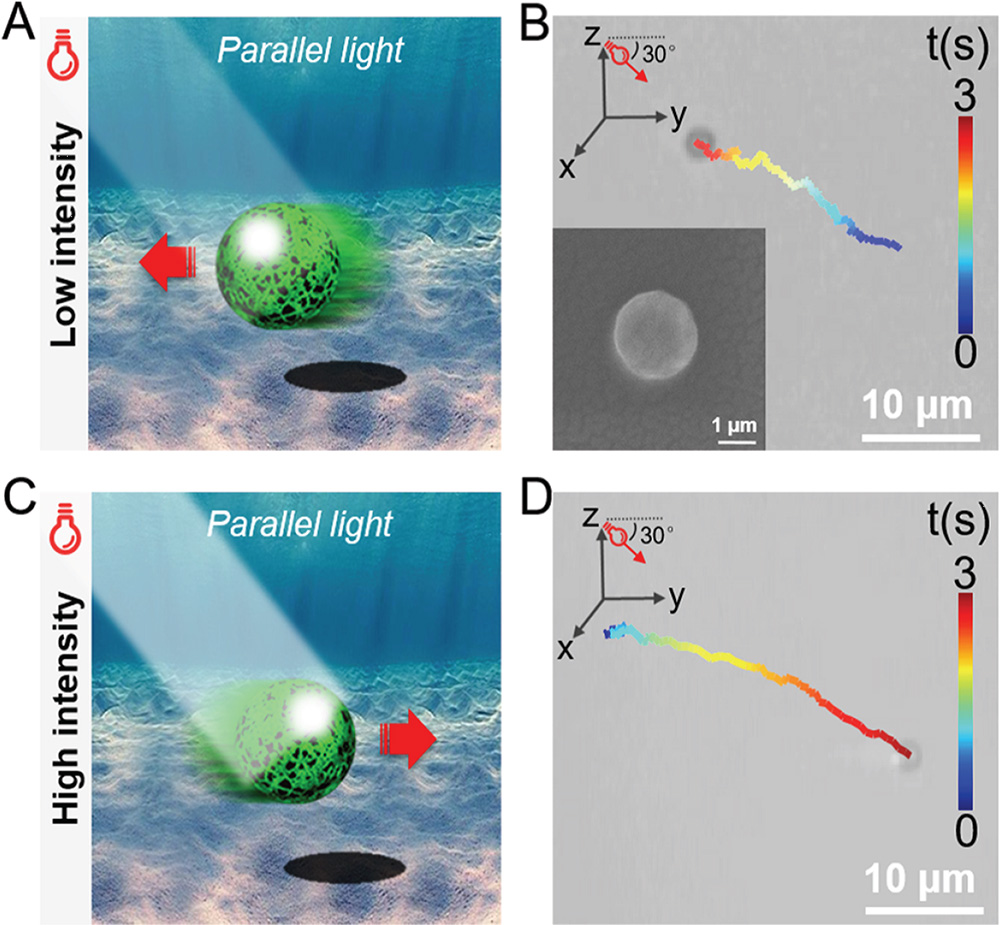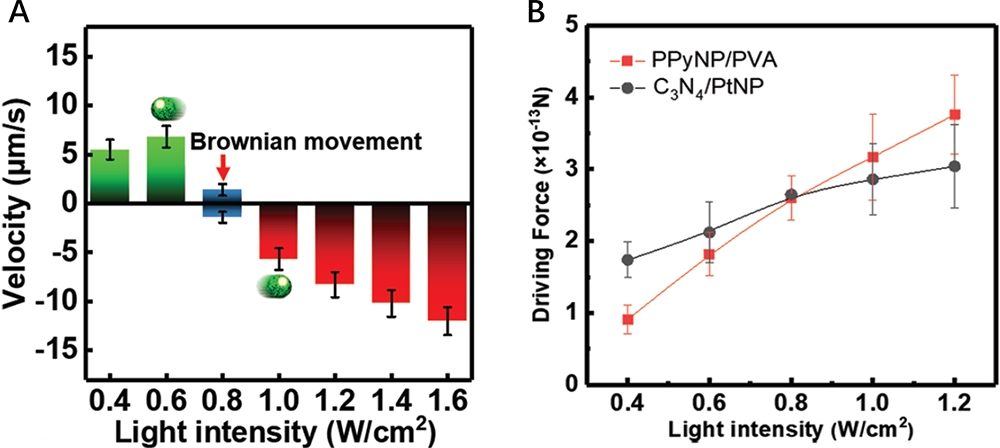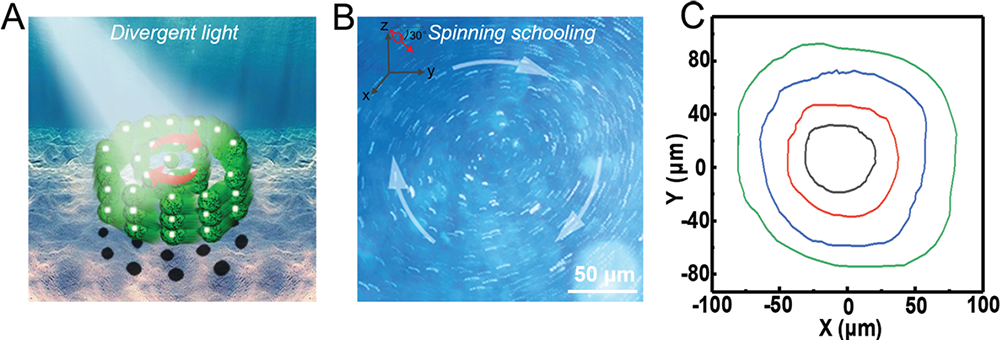Artificial Phototactic Microswimmer Behaves like Green Algae
Date:12-10-2021 Print
In nature, micro-organisms could sense the intensity of incident visible light and exhibit bidirectional (positive or negative) phototaxis. For instance, green algae can be attracted by weak light and escape from strong light. The light intensity-dependent bidirectional phototaxis is vital for micro-organisms to gain energy or escape from damage. Inspired by nature, great efforts have been exerted to develop artificial light-driven and photoresponsive microswimmers (micro/nanomotors), which can not only serve as perfect model systems for nonequilibrium physics but also have great potentials in microfluidics and biomedicine. However, despite the significant progresses during the last decade, it is still challenging for the artificial microswimmers to achieve the similar biomimetic bidirectional phototaxis, which greatly limits their applicability.
In a new study, entitled "Bioinspired Micro/nanomotor with Visible Light Energy-dependent Forward, Reverse, Reciprocating and Spinning Schooling Motion", published on PROCEEDINGS OF THE NATIONAL ACADEMY OF SCIENCES OF THE UNITED STATES OF AMERICA on Oct 12, a research group led by Prof. YANG Mingcheng from the Institute of Physics, Chinese Academy of Sciences, collaborating with Prof. Dong Bin's group from Soochow University and Prof. Dong Renfeng's group from South China Normal University, has made great progress in developing the artificial phototactic microswimmer.
The researchers innovatively integrate the light-induced self-diffusiophoresis and self-thermophoresis effects into an artificial microswimmer that is composed a carbon nitride (C3N4)/polypyrrole colloidal particle suspending in water. They find that the light-driven artificial microswimmer moves toward the visible light source under low illumination and away from it under high irradiation (Fig.1), resembling the behavior of phototactic microorganisms. The unique light intensity-dependent phototaxis originates from the competitive interplay between the self-diffusiophoresis and self-thermophoresis mechanisms (Fig.2). More interestingly, the competition between the two driving mechanisms leads to a collective bidirectional phototaxis of an ensemble of microswimmers under uniform illuminations and a spinning schooling behavior under a nonuniform light (Fig.3), both of which can be finely controllable by visible light energy.
These findings provide important insights into the design of the artificial counterpart of the phototactic micro-organism, and constitute an important step towards developing biomimetic photoresponsive active systems.
This study was supported by the National Key Research and Development Program of China, the National Natural Science Foundation of China, the Collaborative Innovation and the Collaborative Innovation Center of Suzhou Nano Science & Technology, and the Strategic Priority Research Program of Chinese Academy of Sciences.

Fig. 1 Schematic illustration and the corresponding representative trajectory image showing the (A, B) positive and (C, D) negative phototaxis of the microswimmer, under weak and strong light, respectively. (Image by Institute of Physics)

Fig. 2 (A) Self-propelling velocity of the microswimmer as a function of light intensity. (B) The magnitudes of the self-diffusiophoretic (black) and self-thermophoretic driving forces (red) at different light intensities. (Image by Institute of Physics)

Fig. 3 (A) Schematic illustration, (B) overlaid optical image and (C) representative trajectories showing the spinning schooling motion of a group of microswimmers under a nonuniform irradiation. (Image by Institute of Physics)
Contact:
Institute of Physics
YANG Mingcheng
Email: mcyang@iphy.ac.cn
Key word:
Artificial microswimmer, phototaxis, self-phoresis
Abstract:
By combining the light-induced self-diffusiophoresis and self-thermophoresis mechanisms, an artificial phototactic microswimmer is realized, which can exhibit light intensity-dependent bidirectional phototaxis and intriguing light-controlled collective behavior.